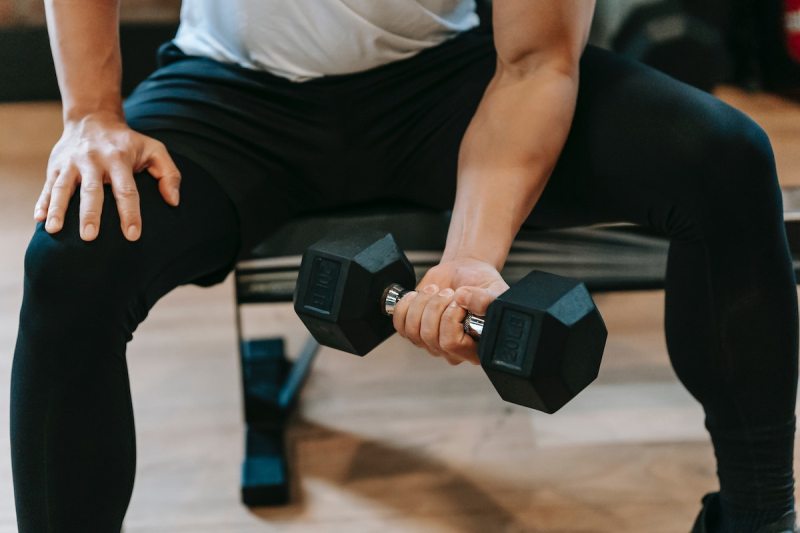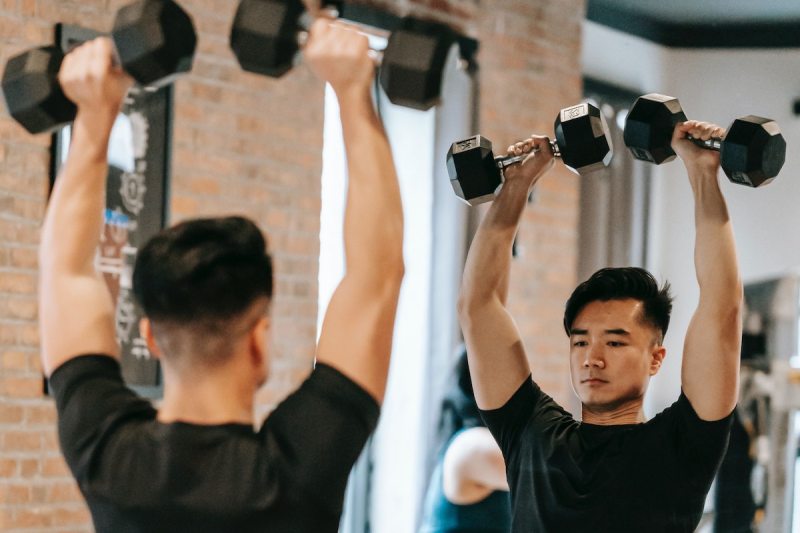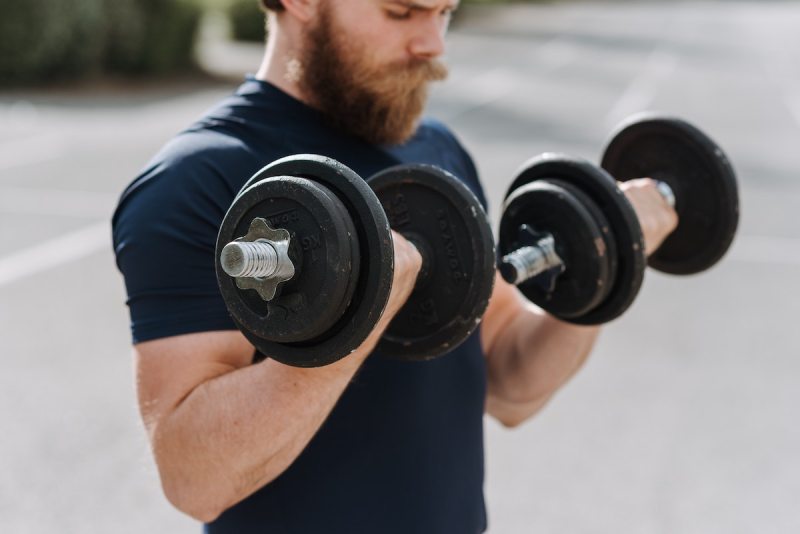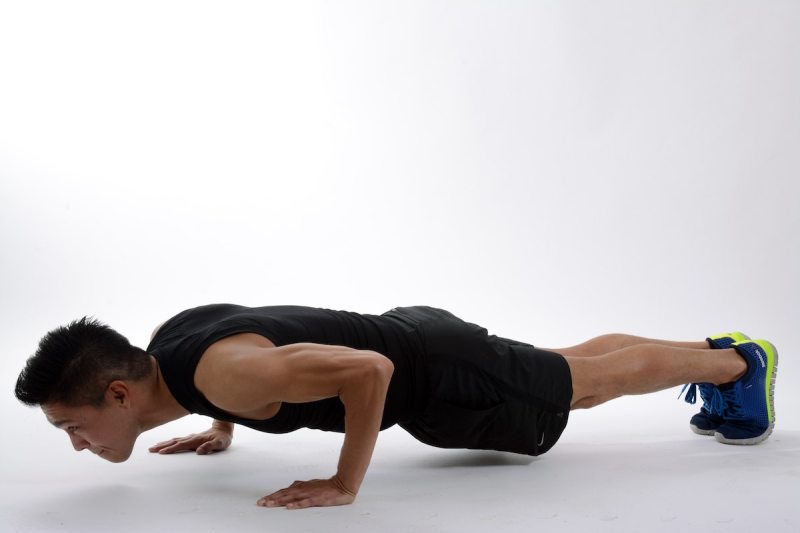
Our arms carry us through life — literally. We use them to lift kids, pets, and boxes. They can help us power through a cardio workout (pump those arms), do yard work, and pull together ingredients for a wow-worthy meal.
When discussing arm strength, the first visuals that come to mind are often bulked-up bodybuilders. However, arm strength is essential for more than aesthetics. It allows us to perform day-to-day tasks with reduced strain and pain. Arm muscles aren’t merely fashionable — they’re functional.
Your knowledge of the muscles in your arm may vary. However, the bicep is one most people have heard of, at least in passing. The biceps are a large and vital muscle group you often use throughout the day without thinking twice about it (unless the task is a challenge).
Gaining and maintaining strength in the biceps is essential. Read on to learn why, along with seven biceps exercises to bulk up your arm day.

Biceps 4-1-1
Understanding the basics of these muscles, such as their function and where they are, may provide the motivation to devise a biceps workout of your own.
Where are the biceps, and what do they do?
The biceps are a large, thick muscle in the front of your upper arm. They’re situated between the shoulder and the elbow.
The biceps’ primary functions are:
- Forearm supination: Also known as outward rotation, forearm supination allows you to wave to your friends.
- Elbow flexion: Elbow flexion lets you curl your arms to do anything from a biceps curl to picking your phone off the table to text a pal.
- Shoulder flexion: This function allows you to move your arms up and down, which is essential for lifting items.
Why is it important to strengthen the biceps?
A biceps workout isn’t merely about attaining and maintaining a particular look. It’s about building functional strength to lift, pull, and push.
As you get older, functional strength can decline. Though you can’t completely turn back the hands of time, you can slow the aging process – and live with less pain — by building and maintaining biceps strength. More generally, strength training of any or all muscles can improve cardiovascular health, decrease the chances of falls, stabilize blood sugar levels, and improve mobility and flexibility.

7 biceps exercises for your next workout
Ready to amp up arms day? From numerous variations of biceps curls to pushups, these moves are a total workout for the biceps. Most require free weights or gym equipment.
Bicep curl with dumbbells
- Grab a set of dumbbells.
- Hold the dumbbells by your sides in your hands, with your palms facing the ceiling.
- Curl the weights slowly, bending your elbows as you go while keeping them close to your body.
- Stop when you hit your shoulder and hold for one second.
- Do the reverse, lowering the weight back to your sides.
- Repeat 10–15 times.
Hammer curl
- Get two dumbbells.
- Hold the weights at your sides with your palms facing your thighs.
- Similar to the bicep curl, slowly curl the weight. Bend the elbows as you go while keeping them next to you, grazing your sides as you lift the weights. Keep the palms facing your sides — this factor differentiates the hammer curl from the standard biceps curl.
- Stop at the shoulder and hold for a count of one.
- Slowly lower the arms until they’re straight.
- Repeat 10–15 times.
Pushup
- Get in a plank position with your legs and arms straight. Your hands should be slightly wider than shoulder-width apart.
- Bend your elbows to lower your body toward the floor.
- Stop when your chest is nearly on the floor and hold.
- Push yourself up.
- Repeat 15–20 times (or more).
Note: You can modify this move by staying in an all-fours position with knees bent.
Reverse curl
- Stand straight with a set of dumbbells.
- Place the weights on your thighs, with your palms facing down.
- Bend the elbows, lifting the weights and squeezing the biceps as you go.
- Feel the biceps contract.
- Stop when you can no longer lift without moving the upper arms.
- Lower the weights slowly.
- Repeat 10–15 times.
Biceps curl with a resistance band
- Get a resistance band.
- Stand with both legs on the resistance band about shoulder-width apart.
- With palms facing inward, slowly bend the elbows and curl them toward the shoulders as you did with the dumbbell curl.
- Slowly uncurl the arms until they are straight and back by your sides.
- Repeat 10–15 times.
Chin up
- Grab the pull bar with hands shoulder-width apart. Your palms should face you.
- Engage the abs by pulling the belly button into the spine.
- Use your upper body to pull yourself toward the bar.
- Stop when your chin reaches the bar.
- Repeat 5–10 times (or more).
Incline curl
- Sit on a workout bench with your back straight.
- Place weights by yours sides with your palms up.
- Engage the abs by pulling the belly button into the spine.
- Lift the dumbbell toward the shoulders.
- Slowly lower the dumbbells back to your sides.
- Repeat 10–15 times.

3 mistakes to avoid when considering a workout for biceps
Logging a biceps workout has many benefits and may feel mentally empowering. However, a few mistakes can derail your progress — and they can be easy to overlook.
- Making arm day every day: Focusing on your arms and only your arms every single day is a recipe for overuse injuries. You also need muscles like the legs and abs to perform biceps exercises. For example, the core can help you maintain balance and reduce back pain when you’re using heavy weights.
- Only working on the biceps: During arm day, ensure you’re working other muscles, namely the triceps, chest, and back, to avoid injury. You may focus only on the biceps one day and the triceps and shoulders another — but make sure everything gets equal time.
- Pushing through an apparent injury: Biceps exercises should feel like a resistance workout because, well, they are. However, if you feel like you’ve strained or pulled something, stop and get checked out. You want to be able to bench press, not get benched for longer than necessary. Your primary care physician can refer you to a specialist for further evaluation if needed.
If none of the exercises here strike your fancy, remember that a personal trainer can help you customize biceps exercises, including choosing the right weight and moves for your goals and abilities. Additionally, some gyms offer free trial services.



